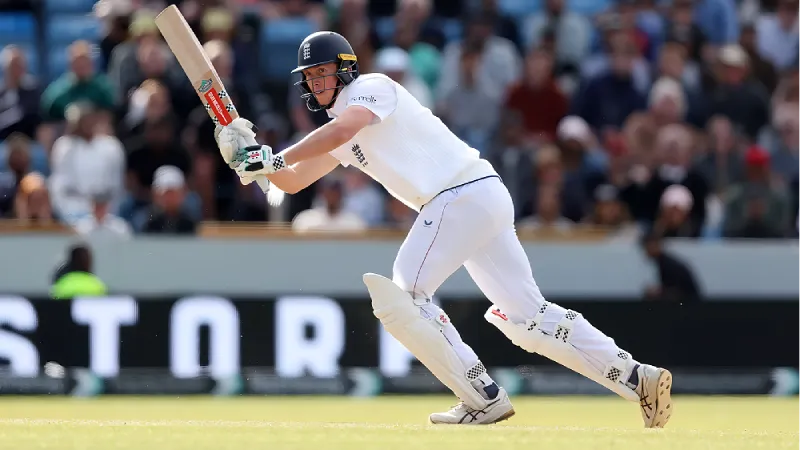Do you remember when Zak Crawley was the completely free-spirited wild child of England’s top order? The carefree free shots, the swipe away from the off stump, and the occasional explosion of madness nestled between moments of brilliance? In that mythical 371 chases against India, Crawley—yes, that Crawley—was suddenly the designated driver in Bazball’s wild road trip, steering with surprising calm while the rest of the crew revved the engine.
The Patience Player in a Bazball World
Let’s be truthful: Crawley’s metamorphosis did not happen in a flash. This is not some fairytale setting where the selfish dasher suddenly became Rahul Dravid. What we’re seeing, rather, is a cricketer learning to temper a game that thrives on pace — a controlled defiance within an already defiant style.
Crawley’s 65 of 126 – he will never score a slower Test fifty – was not flashy, but it was bang-on in purpose. If Duckett was the explosion that lit the night sky, Crawley was the slow burn of the wick that made it happen. Together, they put on 188 runs for an opening stand – England’s second highest in a fourth-innings chase since 1991, if that needs reminding – that wasn’t just about runs. This was a measured performance in a pitch and innings milking tempo control, rhythm changes, and, believe it or not, proper grown-up cricket. On day 5, England fairly crept from the blocks at less than 2.5 an over. Creeping like a crawl is always tactical; in this context, it was the runway needed for a full-length take-off.
Crawley’s newfound patience isn’t just restraint — it’s a mid-Atlantic style of aggression. Identify the right ball, wait, give Duckett the stage, while silently writing the script. Maybe Bazball doesn’t always need lead guitar; sometimes, rhythm guitar — it keeps the band together.
The Silent Stats: Why Crawley’s Understated Numbers Matter
He’s not a stat-padding opener, but that’s alright. Since the start of the Stokes-McCullum era, Crawley is averaging 33.41, and while that isn’t earth-shattering news, it’s five points higher than his average before the Stokes-McCullum era. What’s interesting is how Crawley has a viable strike rate of 77.28, without necessarily being the viral guy on Twitter after every Test match.
Since 2022, Crawley and Duckett have been the most effective opening pair in a Test match for England, with over 2100 runs and almost 45. Duckett is typically the aggressive player as he is at a strike rate of 92+, and when Crawley scores runs, they may not scream out for attention…but it allows for space for other players to function. That’s powerful. That’s intentional. That’s a role.
Bazball 3.0: When Conservatism Becomes a Tactical Weapon
Ben Stokes praised Crawley’s impact. As did Duckett, not because he was an extravagant player, not because he was an exciting player, but because he got on with the job. Crawley looked unperturbed facing Jasprit Bumrah – potentially the most dangerous bowler on the planet – and dealt with everything the Indian speedster threw at him. He had no slashes. There was no risk of complete and utter brain fade. Just clarity.
And it was not a one-off. Against Zimbabwe at Trent Bridge, Crawley made a composed 124 off 171 in another major partnership – once again, not front-page news.
What’s more, he’s managing to do all of this while still having fun. He is still punishing the bad ball, still producing classic cover drives. But now he is also selecting when to unleash, something that no doubt the previous incarnation of Crawley would have let slide.
To catch up on the most current news on all of your favorite thrilling cricket updates, visit Six6slive to access our comprehensive Latest News, insightful analysis, and updates. Connect with the action now to make sure you never miss out!
